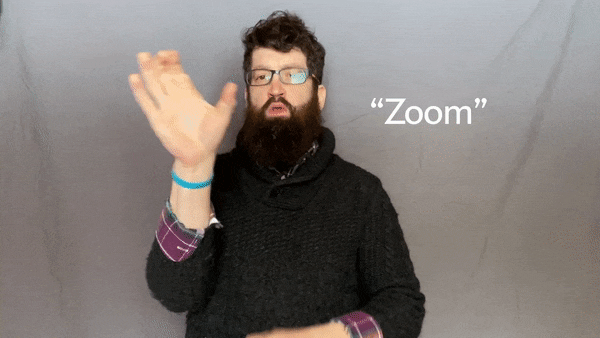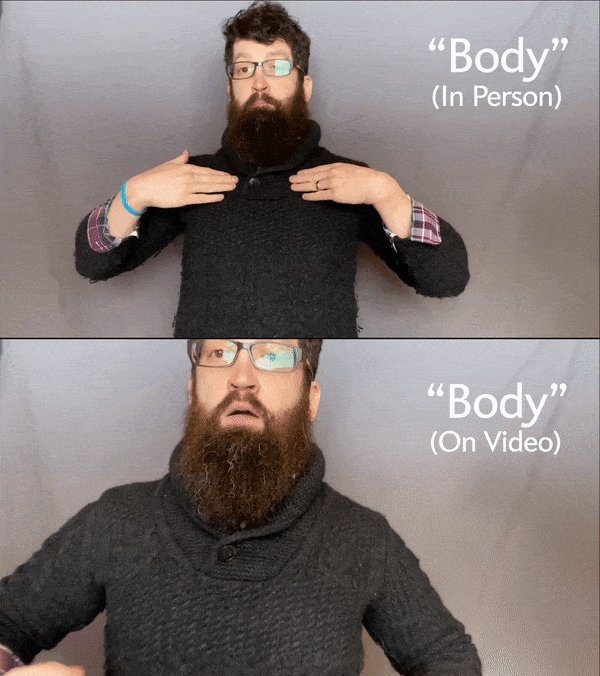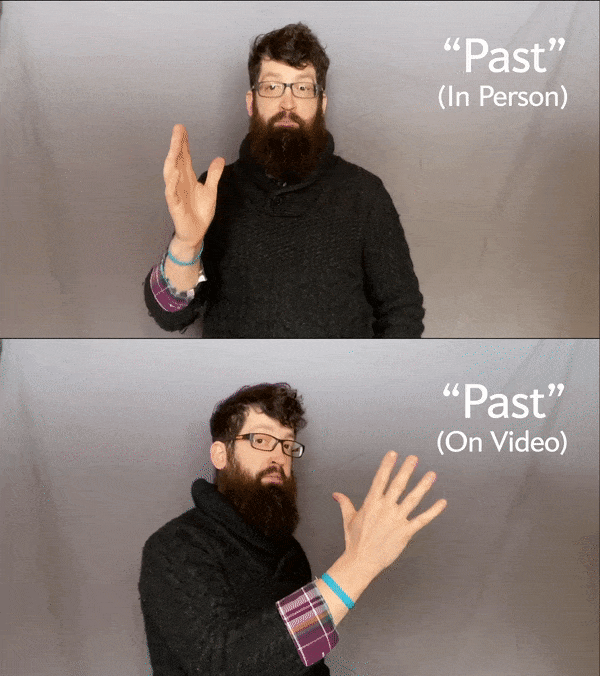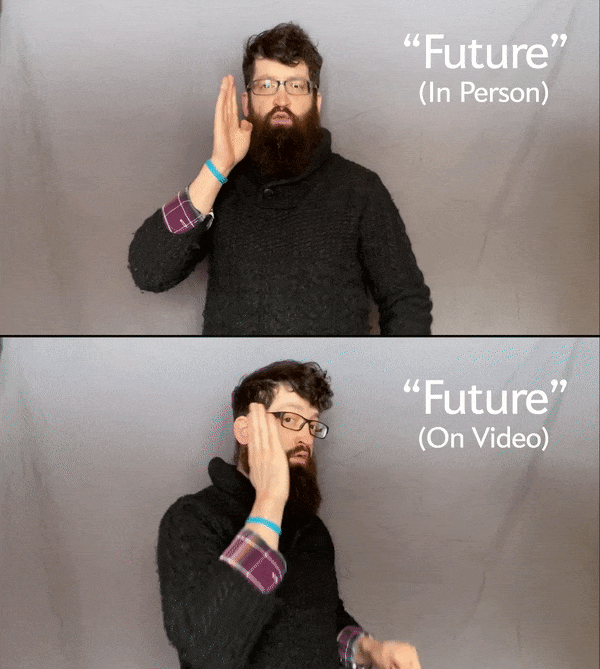
One adaptation arises as a result of a video meeting’s limited frame size. “The signing space is expansive,” says Michael Skyer, a senior lecturer of deaf education at the Rochester Institute of Technology. “Even if many signs are produced easily or normally in the ‘Zoom screen’ dimensions, many are not.” The sign for “body,” for example, is usually produced by making a “B” hand shape and moving it from the shoulders to the hips. But to fit the reduced signing space demanded by videoconferencing, many signers have been ending it at the chest.

Signs that take up a lot of space may be harder to convey on video, but so are small ones that involve finer details. Finger-spelled words, for example, as well as numbers and colors, all involve relatively small details formed with a single hand—which can make them harder to see clearly on a tiny conference screen. Skyer says signers must go slower and repeat themselves more often to fill in such gaps.
Signers communicating through video must also consider how they angle their bodies so as to convey what they mean clearly. If two people face each other in an in-person interaction, each can easily see whether the other’s hands are moving toward them or away from them. This can be crucial for grammatical reasons; for example, signs representing future tense are usually made with a forward motion away from the signer’s body, whereas past tense signs move the opposite way. Such nuances can be difficult to detect on a video screen. Skyer is deaf and teaches in American Sign Language in a bilingual ASL-English environment, in which a teacher typically signs in ASL and also shares content in written English. When using videoconferencing in class, he says, he sometimes has to sign with his body turned to present himself in three-quarters view, so that signs normally seen head-on are easier to understand.


Some signs require a shared space for their meanings to be clear. Ones that involve indicating or pointing at another person simply don’t work in a typical videoconferencing “room,” where multiple speakers may appear in different arrangements on each participant’s screen. Julie Hochgesang, an associate professor of linguistics at Gallaudet University, says some deaf people using videoconferencing have begun avoiding signs such “ask” or “give”—which require indicating individuals—and replacing them with alternatives.
Will such changes fade after people return to in-person interactions? They might—but some experts say linguistic shifts are still inevitable. Because sign languages often involve and are inextricable from their physical environments, Skyer and Hochgesang both suggest people should not necessarily think of them as having defined identities. “Instead, I like to say there are ASL communities with varying practices and lexicons,” Hochgesang says. “Yes, undoubtedly, the long-term use of Zoom and other videoconferencing platforms (including FaceTime, videophones, etc.) will shape and constrain our language practices. But that’s true for anything in our lives.… Our tools, people we interact with and other aspects of our environment will always be a factor in our language and communicative practices.”
Despite the limitations they place on American Sign Language, videoconferencing platforms can also be empowering for deaf people. The multimodal features of these tools—which enable both video and text chat—give his students multiple avenues for learning, Skyer says. Instead of being constrained to one way of communicating, they can now type in written English using the chat feature, sign in ASL using the video feature or do a combination of both—all from home.
“ASL is defined by how it is used,” Skyer says. “How it is used is not static, and the Zoom changes show us this. Words, concepts and pragmatics [the use of language in social contexts] themselves evolve and shift given new mediums of expression.”

No comments:
Post a Comment